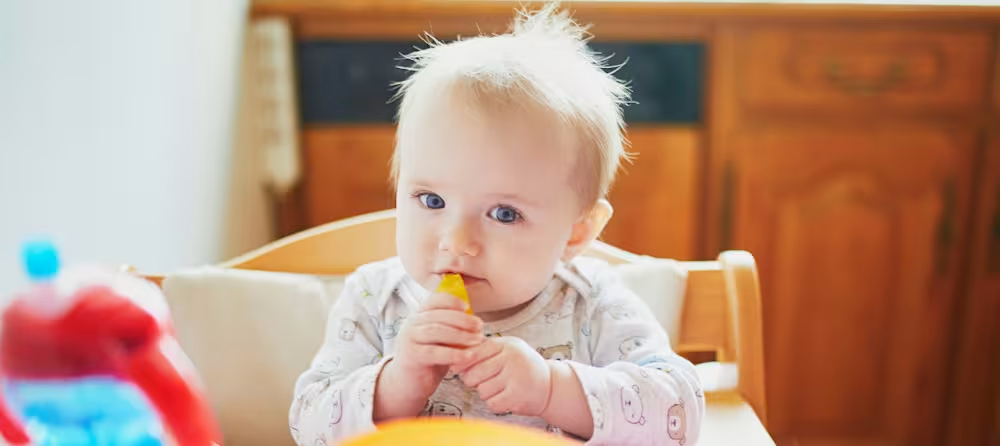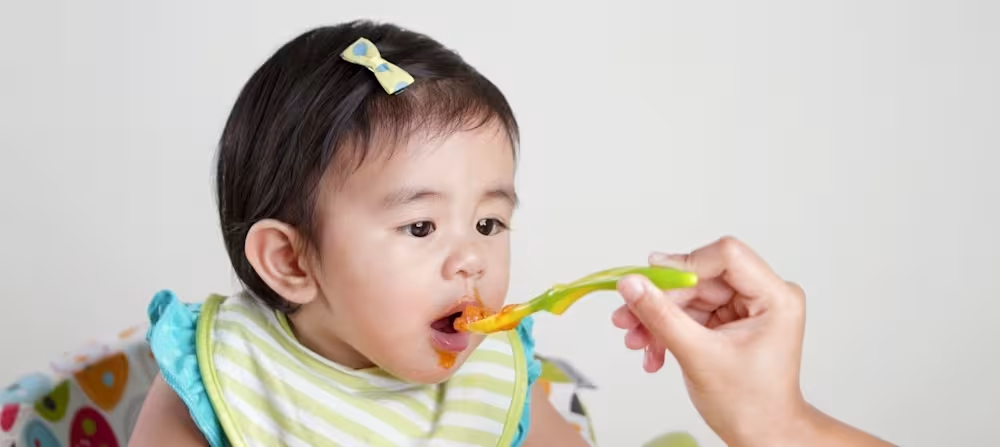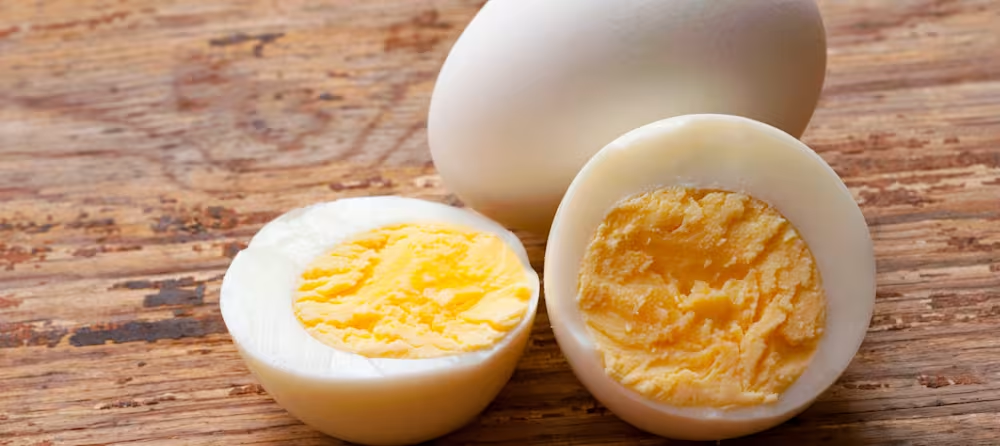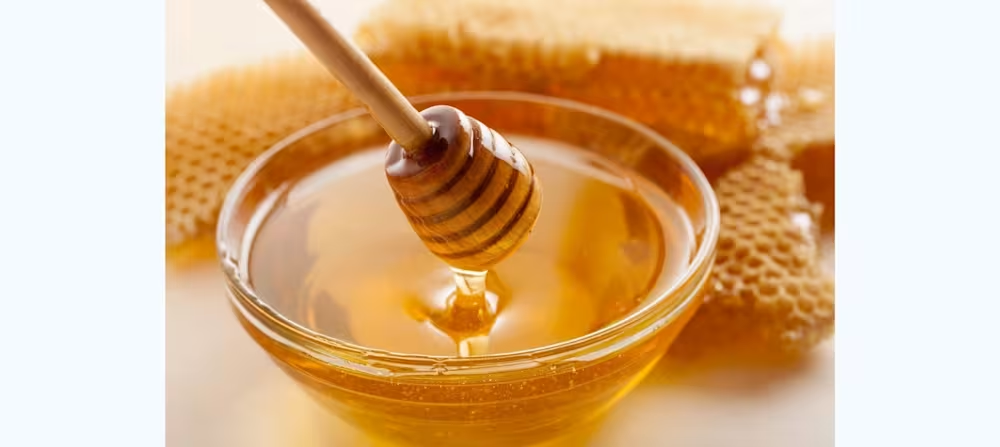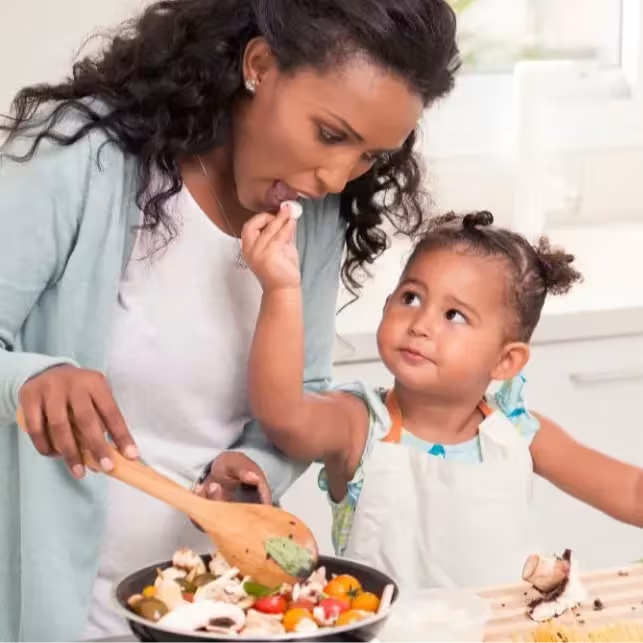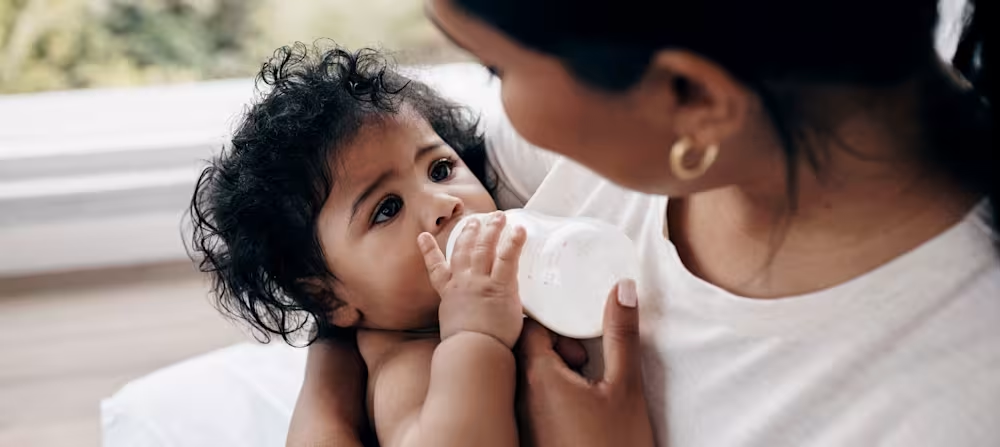Baby-led weaning vs. purees: Which method is better?
Updated Aug 14, 2025

Purees. Baby-led weaning. A combination of the two!? When it comes to starting solids, there are many different weaning methods, and no one right way to go about it. However, purees and baby-led weaning tend to get the most attention. The traditional purees method has historically been the go-to for parents, but baby-led weaning (also known as BLW) has been gaining popularity since it was introduced by Gill Rapley in 2005.
This article covers the differences between baby-led weaning and purees, the pros and cons of each, and how to combine or transition between methods.
Table of Contents
What are the differences between baby-led weaning and purees?
No matter the method, the goal of complementary feeding (weaning) is to transition the baby to eating solid table foods and to fill in nutrition gaps between roughly 6 and 12 months. That said, there are different ways to go about this transition. If you’re having trouble deciding what would work best for your baby, talk with your pediatrician, or seek the help of a pediatric registered dietitian.
| Baby-led weaning | Purees |
|---|---|
| May save time and money | Can be time-consuming or expensive |
| Mealtimes can get messy | Cleaner mealtimes |
| More food waste | Less food waste (potentially more packaging waste) |
| No need to transition to different feeding styles | Need to transition to table foods around 9 months |
| Encourages motor skill development | Does not encourage use of motor skills |
| Better acceptance of a variety of textures | May get “stuck” on certain textures |
| May reduce the likelihood of picky eating | May increase the likelihood of picky eating |
| Easy to include baby in family meal | Harder to include baby in family meal |
| Difficult to know how much baby is eating | Easier to know how much baby is eating |
Baby-led weaning: What you need to know
(BLW) offers safe table foods right from the start, often forgoing spoon-feeding and purees. Babies are encouraged to develop their fine motor skills and independence when they self-feed.

Pros of baby-led weaning
May reduce the likelihood of picky eating
Baby-led weaning often exposes babies to a wider variety of foods, textures, and flavors [], which may help to reduce picky eating behaviors later on: a huge win! Greater exposure usually leads to greater acceptance of foods in toddlerhood and beyond.
Saves time and money
It’s possible to save time and money by serving your baby table foods, especially in the early months when a baby’s meal can consist of few pieces of food from a parent or caregiver's plate. Making homemade baby food can be time-consuming, and purchasing commercially prepared baby foods can add up fast.
Encourages motor skills development
Self-feeding allows your baby to strengthen muscles and develop coordination in their back, arms, and hands, as well as improve oral motor skills.
Easier family mealtimes
When your baby eats the same food as the family and self-feeds, it’s easier for your baby to be included in family mealtimes. Everyone can eat at the same time, and baby learns by watching others eat.
May improve diet quality
Just like adults, babies need to consume a variety of foods to stay healthy. Baby-led weaning encourages parents to serve more than one food at a time, which helps promote a varied diet. Additionally, serving multiple foods at once allows parents to pair foods together that offer nutritional benefits. For example, vitamin C increases iron absorption, so pairing a fruit (with vitamin C) with beans (iron-rich) is beneficial.
Cons of baby-led weaning
Mealtimes are messy
Self-feeding babies can be very, very messy - there’s really no way around it! Be prepared for food to end up on the floor, in baby’s hair, in YOUR hair, etc.
Increased food waste
It can take a while for babies to figure out how to self-feed, and they need time to explore food in order to get the hang of it! Especially in the beginning, when babies are sampling or gumming foods more than eating them, it can feel like a lot of food waste.
It’s difficult to know how much baby is eating
Food tends to end up everywhere (see messy mealtimes!) with baby-led weaning, so it can be tough to know exactly how much your baby is actually eating.
Challenges of baby-led weaning
Meeting nutrient needs
Concerns about meeting a baby's nutrient needs via baby-led weaning are understandable since it is difficult to know exactly what, and how much baby is actually eating. However, with careful planning and enough opportunities to eat, baby-led weaning infants are no more likely to have nutrient deficiencies [] than babies weaned in a traditional fashion.
Growth Concerns
Similar to concerns over meeting nutrient needs, some parents wonder if their baby’s eating enough via baby-led weaning to support their rapid growth and development. However, given a properly planned diet including protein and fat-rich foods, a typically developing baby should be able to consume enough to support their growth with baby-led weaning.
Purees: What you need to know
Purees, or traditional-style weaning, is exactly what it sounds like - spoon-feeding baby purees. Textures should gradually become more advanced, and baby should begin table foods at about 9 months.

Pros of purees
Easier to know how much baby is eating
Knowing how much baby is eating is much simpler with purees since you can keep track of how many spoonfuls your baby has eaten.
Cleaner, with less food waste
Spoon-feeding definitely creates less of a mess than self-feeding, and may also eliminate some food waste (though there’s still waste created from the packaging).
Increased support from other family members or caregivers
Most people are familiar and comfortable with the puree weaning method. Depending on your caregivers, it might be easier for grandma or opa to offer to spoon-feed the baby vs. them knowing how to prepare food for BLW.
Cons of purees
Can be time-consuming and expensive
Purchasing commercially-made baby food can get expensive quickly, especially as baby builds up an appetite! You can save money by making your own baby food at home, but this can be a time-consuming process.
Less opportunity to develop motor skills
Spoon-fed babies may not get the same opportunities to develop motor skills related to self-feeding until later in the weaning process. Of course, there are other ways for babies to practice these skills throughout the day.
Harder to participate in family meals
Oftentimes, spoon-fed babies eat before or after a family meal, so the parent or caregiver has the opportunity to eat during mealtime. Baby may still sit at the table during the meal, but it may be harder for them to want to sit and participate for this extended period of time.
May increase likelihood of picky eating in the future
Purees can make it more difficult to introduce a wide variety of foods, especially at the same time. Many purees are single-food blends, and it can create food waste to open a variety of baby food containers at once since baby only eats small amounts at first. Additionally, mixed purees blend the flavors together, and may make it harder to accept foods individually later on.
Challenges of purees
Accepting new textures may be difficult
When babies become comfortable with a puree texture, it can be difficult for them to accept new textures if they’re not challenged with it soon enough. Parents should introduce a more advanced texture once their baby has mastered the previous one.
Need to transition to table foods eventually
Given their market presence, it can be surprising to learn that most babies only consume puree foods for a few months. No matter which weaning style you choose, the goal is for all babies to be eating soft table foods by 9 months of age. Going through this transition may be frustrating or confusing for babies who get comfortable with, or prefer spoon-feeding.
The mix method: Combination of purees and baby-led weaning
Struggling to decide which method is right for your baby? Here’s the good news: You can do both! There’s no reason to stick to only one method of weaning unless you want to. In fact, many families find that a combination of purees and baby-led weaning work best for them - and hey, isn’t it nice to have even a little flexibility in the world of babies? Best of all, there’s no wrong way to mix the two - babies are highly adaptable!

Pros of combination feeding
Offers opportunities to self-feed
Learning to self-feed is an important skill all babies need to master. With combination weaning, you can offer opportunities to self-feed while still utilizing the comforts of puree feeding.
Easier to determine how much baby is eating
Spoon-feeding some of the time may help some parents better understand how much their baby is eating. It can also be a way to fill in any nutrition gaps that may be missing when serving food baby-led weaning style.
Might be easier for childcare
Childcare centers and providers probably have a preferred way to serve their food. If it’s not the style you’d prefer to follow at home, a combination approach is fine and exposes your baby to multiple methods. Most babies do just fine with eating in different ways in different places.
Easier to join family mealtime
With the combination method, baby can sample some of the food the rest of the family is eating, then enjoy purees after the meal if needed or wanted. Bonus: the person feeding them can actually enjoy eating a hot meal.
Easier to introduce a variety of foods
Combining puree feeding with baby-led weaning makes it easier to introduce a wider variety of foods, simply because there are more food options available to you.
Cons of combination feeding
Mealtimes could be confusing for baby
While most babies do just fine switching between methods of feeding, it may become confusing or frustrating for some. Babies who strongly prefer one method over the other may have a hard time when their preferred method isn’t being offered.
Can be messier and more time-consuming
Two feeding methods may mean double the mess, especially if you feed both ways during the same meal. It may also be more time-consuming if you’re preparing both purees and food for baby-led weaning.
Challenges of combination feeding
Keeping track of everything
Combination feeding can be done in all different ways, and overall, is a beneficial way to wean for many families. However, it can be a lot to keep track of, since there are a variety of different practices being utilized. Having a tracking system may be helpful!
How to transition from purees to baby-led weaning
It’s worth repeating - there are lots of good ways to start a baby on solid foods, but no one best way. And, it’s completely possible to transition from purees to baby-led weaning if you decide you want to! All babies should begin eating table foods by 9 months anyway, so you’ll have to make the transition at some point.
Start slow
Offer a mixture of purees and baby-led weaning table foods to allow your baby to get used to the new feeding method. Try serving both at a meal, or doing one meal with purees and one meal table foods.
Self-feeding with purees
Allow baby to self-feed purees in order to get used to it. You can pre-load a spoon to make it easier for them.
Serve foods safely
Depending on your baby’s age and development, you’ll want to serve foods in a size that is safe and facilitates self-feeding. All foods should be soft enough to squish between your finger and thumb.
Conclusion
Choosing how to start solids is a big decision, but be confident in your ability to determine what is best for your family. And if you find you aren’t happy with the method you originally chose, you can adapt and move forward.
Here are a few final considerations to help you choose what’s best for your family.

Why choose baby-led weaning over purees?
If serving table foods right from the start interests you, baby-led weaning is a great choice! It also eliminates the need to make or purchase baby food, and may come with a whole host of benefits, including reducing picky eating later in childhood. Many parents find baby-led weaning easier and less stressful, so this may be a good choice if you have other children, too.
Why choose purees over baby-led weaning?
If you feel more comfortable knowing exactly how much your baby is eating, or want to make sure they are getting foods with high-priority nutrients, purees will be a good fit! Puree weaning may be supported more by family members and other caregivers, or, you may simply be more comfortable with it.
Why choose a combination of purees and baby-led weaning?
If you like aspects of both puree weaning and baby-led weaning, a combination method may be the best fit. This method offers flexibility, peace of mind, and works well for many families.
FAQ about introducing solids to babies
Share article:
Note: The content on this site is for informational purposes only and should not replace medical advice from your doctor, pediatrician, or medical professional. If you have questions or concerns, you should contact a medical professional.
2 Sources
Table of Contents
Share article:

